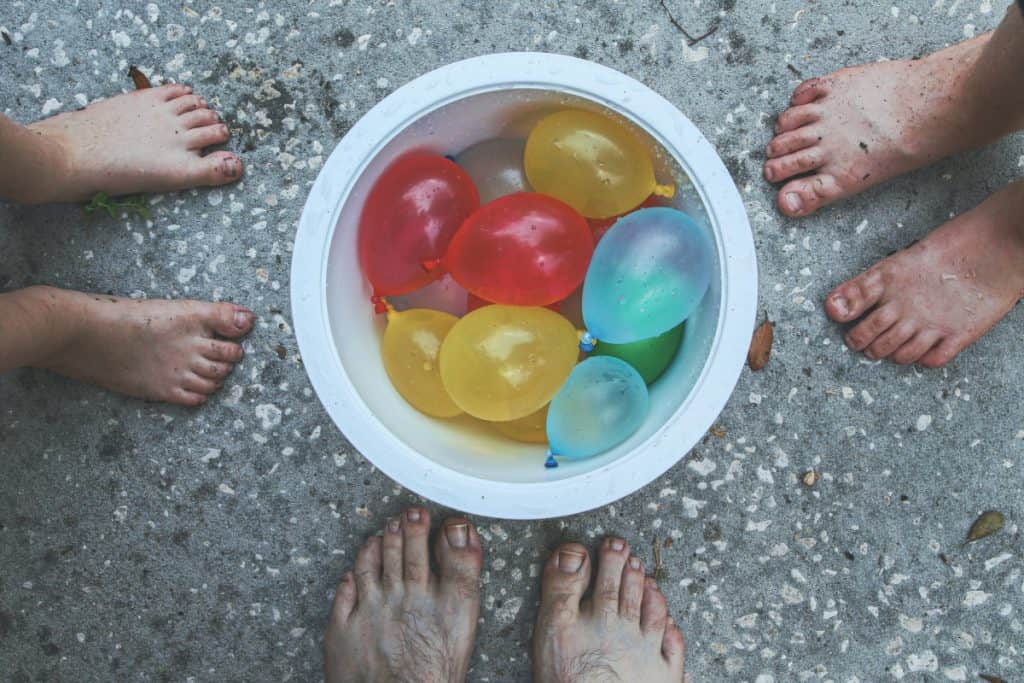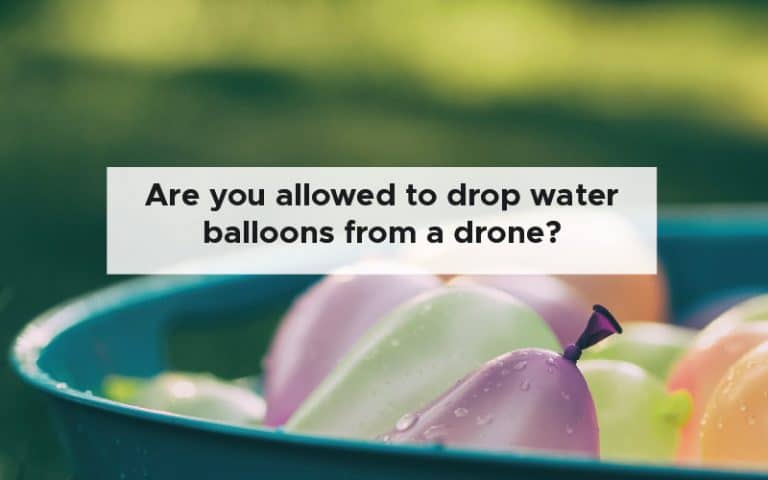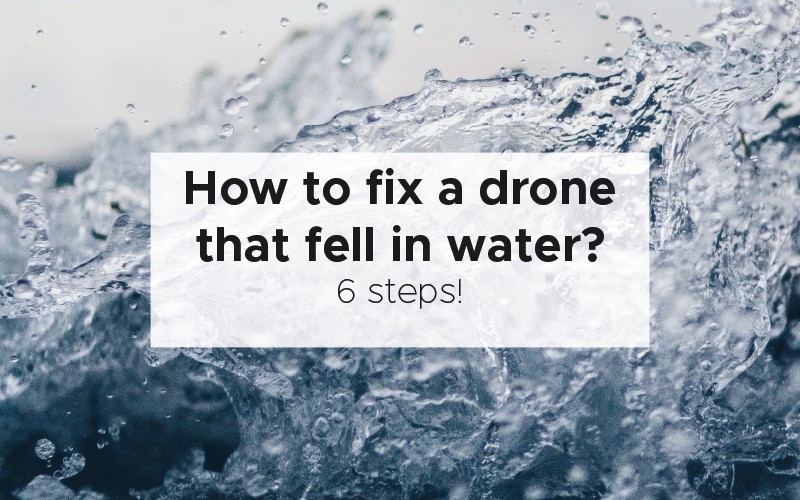Dropping a water balloon from a drone seems like a lot of fun. When I first purchased a drone, I couldn’t wait to try a load of different activities. I wanted to fly, capture photos, record videos, deliver stuff, fly erratically, and drop stuff from my drones, such as fishing lines and water balloons.
You are allowed to drop water balloons from a drone, but flying over people without their explicit permission is illegal and is in contravention of most aviation rules for unmanned aerial vehicles. If you want to drop water balloons from a drone, you must do it safely and with permission.
There are many products on the market that allow you to drop a variety of different things from a drone; if you want to know more, check out my other article – can you drop something from a drone? [All options] for a complete rundown of all of the different items you can drop from a drone. Some of them may surprise you.
There are many reasons why you may want to drop water balloons from a drone. And, if you haven’t thought about it, here are some of the reasons you may want to give it a go.
Why do you want to drop a water balloon?
Dropping a water balloon from a drone causes me to think of water fights and fun backyard experiments. When you are first playing with your drone, you will likely want to try a range of things. Dropping a water balloon is relatively risky because of the proximity of a large amount of water to your drone.
We will go over the risks later, but here are why people like to drop water balloons from their drones.
Because you can
Sending a drone up into the air is a lot of fun and dropping stuff is even more fun. It is your new toy, and you can do what you want with it. There is no harm in playing with your drone as long as you know the potential hazards and are familiar with your drone’s controls and capabilities.
Before you start lifting things, I highly recommend that you get a few hours of practice under your belt so that you will be able to tackle any challenges that pop up while flying your drone and carrying a payload.
In a water fight
A water fight is a very dangerous place to be flying a drone.

The adrenaline and excitement that comes with a water fight can mean that your drone will encounter splashes from water crossfire.
Any good drone pilot plans out a flight mission. They can either do it on paper or in their minds before setting flight. The level of detail depends on how risky the drone flight is and whether or not you are doing it for a client or yourself. For example, a simple hobby flight needs to be planned in your mind – I do it all the time just before taking off to come up with a game plan if anything goes wrong.
Using a drone as part of a water fight means that you will have to be a very competent pilot to move the drone quickly. Using a drone as part of a water fight certainly is more of an advanced activity with your drone and not something I would be willing to risk.
To do some home experiments
Having access to a drone means that you will have the capability to run some fun experiments. The enjoyment that people get from a drone is directly related to the types of activities they do with the drone. Flying around the same areas can get boring, but simple backyard experiments can be fun to do with friends.
Try dropping a water balloon onto a target. You can even put a little bit of food colouring into the water so you can compare your attempts with your friends.
Put out little fires
It could be fun to use a water balloon drop to put out small fires or a candle. Only do this if you can contain the fire and not put any local areas at risk.
Flying your drone above any open flame can be dangerous and cause warping in the propellers and damage a drone’s plastic components. I do not recommend that you use your drone to fly over any significant bonfire or burning wood.
Dropping a water balloon onto small contained fires from a relatively high altitude is one of the safest ways to perform this activity.
There are plenty of potential hazards of dropping a water balloon from a drone which, every good pilot should understand and take steps to mitigate.
Potential hazards of dropping a water balloon from a drone
There are many potential hazards of dropping a water balloon from a drone. Hazards include getting water in the electronic components, flying over people, having a reduced battery time because of the increased weight, having an unbalanced drone with a pendulum effect and more.
Water in your drone
Getting water into the body of your drone is very damaging to the electronic components. Tap water contains minerals that can conduct electricity between components and cause shorting.
If you want to know more about how to fix a drone with water damage, check out my other article where I go through the six simple steps for revitalizing your drone; if it has come into contact with water – click here.
Water that gets into the body of your drone can seep deep into the electric components. It doesn’t take much for water to get into a drone. Particularly if the water hits the propellers, the propellers can easily propel the water droplets at high speed into the vents. Vents are required on many drones because of the amount of energy transferred from the battery to the motors. These vents allow for quick dissipation of heat and also ingress of moisture.
If your drone ends up with a significant amount of water in the body, you should disconnect the power immediately and allow the drone to dry in a safe place for many days.
Flying over people
Flying your drone over people is illegal and against the drone flying rules for a variety of jurisdictions. If you are using your drone in a water fight, you are likely flying over people at a medium or low altitude.
As long as you are on private property and you have explicit permission from the people you are flying over, you will fly with caution. However, the heat of a water fight can cause you to lose concentration and increase the risk of uncontrolled descent and injury.
Whilst a drone cannot cut off your finger, it can cause a significant amount of injury to soft tissue. Researchers from Aalborg University in Denmark have been testing the damage caused by a range of propellers. They have been using them to cause a range of damage to pork (as it is one of the closest things to human muscle and skin). They also took the propellers to other materials like glass and cars too. All in the name of science!
The scientists discovered that plastic blades shatter pretty much on impact while carbon fibre blades (known for their strength) can do a lot more damage. These were only the beginnings of a research study, and they are planning on working more with hospitals as drone injuries become a more common occurrence.
Reduced battery time
The next important consideration is the weight of the object that you are lifting. Lifting a heavy object decreases the drones flight time, which may catch you by surprise.
The amount of weight that a drone can lift depends on the size of the motors, the number of propellers, the battery capacity and discharge rate, and several other factors such as propeller size and pitch.
The increased weight significantly reduces battery time which may creep up on you. Some drones like to land at a 30% battery charge, which may cause an uncontrolled descent and increase the risk of landing in an undesirable place.
Unbalanced drone
adding any significant way to your drone changes the balance. This balance can affect takeoff and landing and, when the water balloon is released, it changes the upwards thrust component of the flight. As soon as the balloon is let loose, the drone needs significantly less power to stay in the air.
While the balloon is on the drone, there is a significant pendulum effect. The size of this effect depends on how long the string connects the balloon to your drone.
Even the smallest amount of movement can cause significant changes in a balloon’s direction on a long string. The pendulum effect makes navigating and controlling your drone much more difficult.
As long as you are in a wide-open space and you can fly your drone with a significant error bar, you are unlikely to clip any nearby obstructions or overhanging branches.
Clipping overhanging items
Lastly, one of the issues with flying with a water balloon is the unpredictability of the drone flight. The unpredictability of the drone flight can cause you to clip overhanging branches, walls, and other obstructions in the immediate area.
Staying well away from walls, buildings, trees, and other obstructions is your only guaranteed protection against clipping any objects in the environment. Even if you have a direct line of sight, it can be difficult to know exactly where your drone is in 3D space and, only the higher-end consumer-level drones have sensors capable of detecting fine branches.

How to drop a water balloon from a drone
Skyhook is a company that has been around for a relatively long time, and they specialize in hooks for a variety of DJI consumer drones. They can be used for drone fishing, drone delivery and payload release. They have patented technology and devices that can quickly attach to DJI Mavic series drones and the Phantom series.

No modifications are required to your drone, and no tools are needed to attach their products. Some other products require that you attach the drone to the front LED light. I like this product because the third-party attachment does not affect any of the sensor capabilities.
There are various airdropping systems on Amazon – click here to be taken to some of the most popular – and they even are available for the most up-to-date drones.
One of the most popular allows you to carry items on the DJI Mavic air 2S. It detects the LED light system of the drone and, when it is turned on, the airdrop will be activated. It can carry up to 500 g, which is perfect for small balloons and small parcels.
Buyers guide for dropping mechanisms
If you want to buy a hook for dropping items from your drone, here are the things that you need to pay close attention to so you don’t end up with buyers remorse.
Buying a dropping mechanism for a consumer-level drone typically means buying a third-party accessory. Do not buy a third-party accessory that is not specifically designed for the model and make of drone that you are using.
Trigger options
There are two types of trigger options – mechanical and electronic. Mechanical dropping options normally use the momentum of the drone or the direction of flight to initiate the dropping. On the other hand, electronic dropping normally relies on the push of a button which actuates some motor to release the water balloon.
Each type has pros and cons, but a mechanical drop has less potential for software issues, whilst an electronic drop is safer for your drone. Some dropping mechanisms require that you attach a wire directly into the drone, increasing the risk of damaging your drone.
It doesn’t interfere with drone sensors
If you are adding stuff to your drone, you need to ensure that it doesn’t interfere with its sensors. Anything that can interfere with the drone’s protection mechanism should be avoided at all costs.
Maximum weight
Most drones have a relatively low payload simply because they are not designed for carrying significant amounts of weight. You have to make sure that the drone can carry both the third-party accessory and the weight of the water in the balloon.
Ease of putting on and taking off the drone
It is unlikely that you will want to use this accessory or the time. You need to ensure that the accessory is easy to take on and off your drone with minimal fuss. I am always very wary of accessories that need to be permanently attached to your drone. Look for solid clips and replacement parts, as even the most well constructed third-party accessory can break due to constantly clipping on and off the drone.





